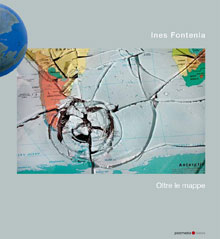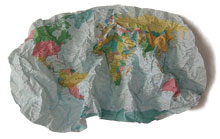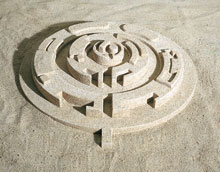
google books
Ines Fontenla
Oltre le mappe
a cura di Angela Madesani
postmedia artist+production 2013
132 pp. 77 ill. a colori
formato 220x210mm
testi in italiano, inglese, spagnolo
isbn 9788874900947
|
16,60 |
"Oltre le mappe" è dedicato agli ultimi quindici anni di lavoro di Ines Fontenla, artista argentina, naturalizzata italiana; non è costruito con un criterio cronologico, ma attraverso le aree tematiche che troviamo all'interno del suo lavoro: quella dell'utopia e dei territori immaginari, quella delle migrazioni e dei conflitti sociali e quella legata all'ambiente e alla natura. Ci troviamo di fronte a una personalità complessa, a un lavoro che non offre risposte, certezze, apre, piuttosto, quesiti, che sottendono un'inquietudine profonda. I lavori di Ines Fontenla presentano tutti un più o meno evidente rimando autobiografico. Tengono conto della sua condizione di "migrante" dall'America Latina, dove la sua famiglia in un lontano passato era giunta dall'Europa, in cui lei da adulta è tornata a vivere. Il suo rapporto con la terra d'origine, tuttavia, è profondo. A Buenos Aires, trascorre ancora molto tempo di vita e di lavoro. Fontenla si pone alla ricerca del senso delle cose, di quello che la circonda, dei macrofenomeni, ma anche delle microrealtà del quotidiano. Nella sua ricerca si avverte una dicotomia continua, in cui i dubbi sono sicuramente più delle certezze.
The book is about the last fifteen years of work by Ines Fontenla, Argentine artist and naturalized Italian: it is not built with a chronological order, but with the areas that we find in her work... the imaginary utopia and territories, the migration and social conflicts and the one linked to the environment and nature. Through her work she does not provide answers or harsh certainties but rather, questions, underlying a deep anxiety. Her existential and artistic attitude is anti-dogmatic, inherently doubtful. The choice to work on the topics we have just mentioned is closely related to this, in close relationship with our complex contemporary world. The works of Ines Fontenla have all a more or less obvious autobiographical reference. They take into account her status as "migrant" from Latin America, where her family in the distant past had come from Europe, where she returned as an adult to live. Her relationship with her country of origin, however, is profound. She still spends a lot of time living and working in Buenos Aires. Fontenla sets out in search of the meaning of things, of what surrounds her, the macro phenomena, but also the micro realities of everyday life. In her research, you feel a continuous dichotomy, where doubts are certainly more than certainties.


Ines Fontenla è nata a Buenos Aires. Nel corso del tempo ha ottenuto delle borse di studio in Spagna e in Italia, che le hanno permesso di approfondire i suoi studi in ambito artistico. Le sue opere, perlopiù installazioni multimediali, hanno per oggetto alcuni temi cruciali del nostro tempo: le grandi migrazioni umane, i conflitti sociali e ambientali. Le sue installazioni, di grande intensità espressiva, riescono a condurre lo spettatore all'interno delle quotidiane inquietudini di ognuno di noi. Parlano una lingua dove superficie e profondità, etica ed estetica coincidono. Ha partecipato a diverse mostre personali e collettive in contesti pubblici e privati in Europa, America Latina e Asia. Attualmente risiede tra Roma e Buenos Aires.
Ines Fontenla was born in Buenos Aires. She obtained scholarships in Spain and Italy, which have allowed her to further widen her studies in the artistic field. Her works, mostly multimedia installations, are centered on some crucial issues of our time, the great human migrations, social and environmental conflicts.Her installations, of a very expressive intensity, are able to lead the viewer into the daily concerns of each one of us. They speak a language where surface and depth, ethics and aesthetics coincide. She has taken part in several personal and collective exhibitions in public and private contexts in Europe, Latin America